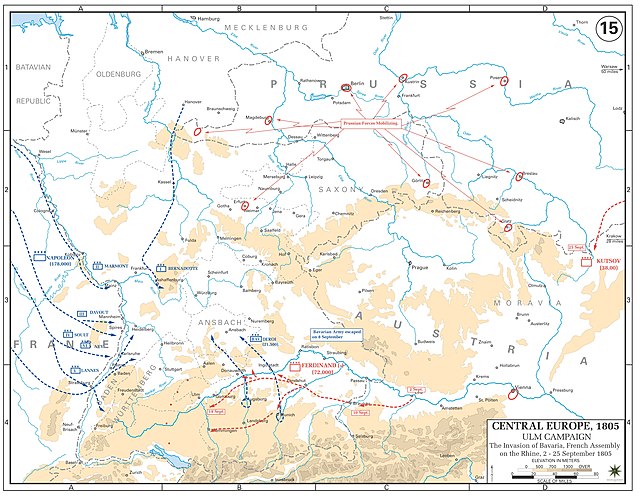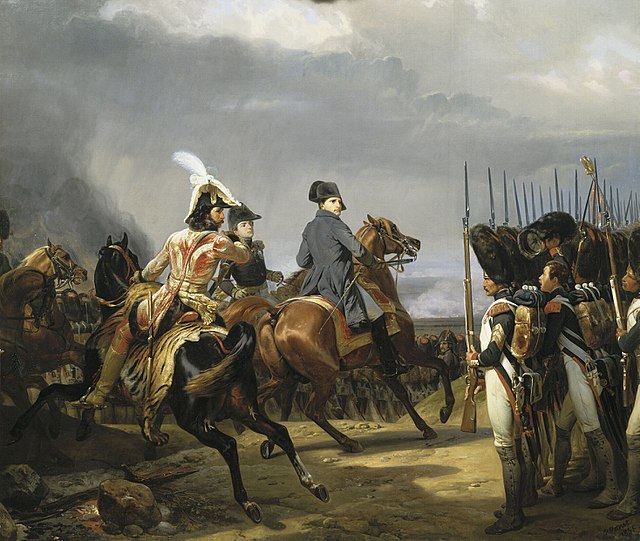War of the Third Coalition
The War of the Third Coalition was a European conflict lasting from 1805 to 1806 and was the first conflict of the Napoleonic Wars. During the war, France and its client states under Napoleon I opposed an alliance, the Third Coalition, which was made up of the United Kingdom, the Austrian Empire, the Russian Empire, Naples, Sicily, and Sweden. Prussia remained neutral during the war.
War of the Third Coalition
In The Plumb-pudding in danger (1805), James Gillray caricatured overtures made by Napoleon in January 1805 for a reconciliation with Britain.
The strategic situation in Europe in 1805 before the start of the Ulm Campaign and the war
The French concentrated around the Rhine from early to mid-September. 210,000 troops of the Grande Armée prepared to cross into Germany and encircle the Austrians.
The First French Empire, officially the French Republic, then the French Empire after 1809 and also known as Napoleonic France, was the empire ruled by Napoleon Bonaparte, who established French hegemony over much of continental Europe at the beginning of the 19th century. It lasted from 18 May 1804 to 3 May 1814 and again briefly from 20 March 1815 to 7 July 1815, when Napoleon was exiled to St. Helena.
Napoleon I on his Imperial Throne by Jean-Auguste-Dominique Ingres, 1806
The Battle of Austerlitz, 2nd December 1805, by François Gérard
The Arc de Triomphe, ordered by Napoleon in honour of the Grande Armée, is one of several landmarks whose construction was started in Paris during the First French Empire.
Napoleon reviewing the Imperial Guard before the Battle of Jena, 1806








